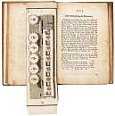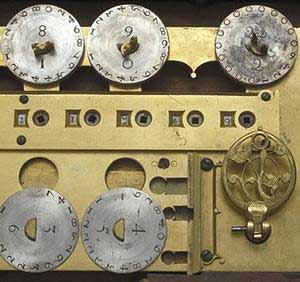When an Apple I computer was put up for sale at the Sotheby’s Fine Books and Manuscripts auction last month, we could not help but wonder how close we are to the times when such events will carry the additional “…and Electronic Devices” somewhere in the name. Let’s hope that we are nowhere near such a paradoxical development. Up for bidding in this auction was an operational Apple I computer manufactured in 1976 with a MOS Technologies 6502 microprocessor, a video terminal, keyboard interface, 8K bytes of RAM, and an Apple I Cassette Interface; together with a rare Apple-I Operation Manual with 12 pages in wrappers (11 x 8.5 in.; 280 x214 mm), with 8 circuit diagrams, of which 2 were on foldout printed verso and recto and one full page; an Apple-I Cassette Interface Manual, and a Preliminary Apple BASIC Users Manual. The lot generated enough interest to sell for $374,500 USD, twice its estimated value of $120,000-180,000 USD.
The total production of Apple I computers did not exceed 200, but it did signal a new age in which computing at a retail price of $666.66 was to become accessible to the masses. The unit offered at the Sotheby’s Fine Books and Manuscripts auction is one out of 50 surviving, with only 6 known to be in working condition.
Three hundred years before Steve Jobs and Steve Wozniak presented their machine to the Homebrew Computer Club, another inventor by the name of Sir Samuel Morland, documented an adding machine and a multiplying machine in his book The Description and Use of Two Arithmetick Instruments, published in London, in 1673. While it does not quite describe the functionality of a microprocessor, it can still be considered to be the first book in computer literature. Virtually every copy of Morland’s book has a different composition, with the engraved plates either printed directly to a page or printed as illustrations and cut out and pasted to pages and versos. Also, some of the copies lack certain engravings, and others lack a few of the first leaves. This make-up of the publication makes it difficult to track pricing without exercising a detail examination and comparison of each individual copy. Nevertheless, current pricing for the scarce copies ranges from $30,000 to $50,000 USD.
Motherboard and Morland’s multiplier
Computer literature is included in the Science genre in our Rare Book Sale Monitor, which tracks and reports on pricing trends each quarter. While the books of Science exhibited a slight increase during the beginning of 2012, they normally remain relatively steady with minor fluctuations. With a few exceptions, computer books are following the same trend as the rest of the books with scientific content. A notable exception includes scarce books in the recently popular topics on Microprocessors, Biotechnology and Physics. There has also been a significant increase in the pricing of books about Apple and Steve Jobs since his death earlier this year.
Collectors of computer literature and, more broadly, science have a much better opportunity to pick up some yet undervalued rare books. The quick pace of technological innovation facilitates the continuous creation of new content with potential opportunities. As analyzed numerous times in prior postings, age does not necessarily equal rare book. Age does have an effect on deteriorating condition or supply reduction, but there are also a great deal of new books that, due to a surge in demand while remaining out of print, have created scarce conditions that push pricing higher.
If you are a collector of books of science and, as is the reality for most of us, you are neither likely to bid on the next Apple I document set available at auction, or spare $40,000 on a copy of Morland’s book, then you should be methodical in building your collection. The topic of Science is very broad in coverage, so do try to specialize in a niche that is more interesting to you, or have above average knowledge on the topic. Keep learning and growing within your selected niche. Look for works that are considered breakthrough innovations that have a limited supply. And finally, do not hesitate to follow your intuition when the time comes to making that special purchase.



{ 0 comments… add one now }
{ 3 trackbacks }